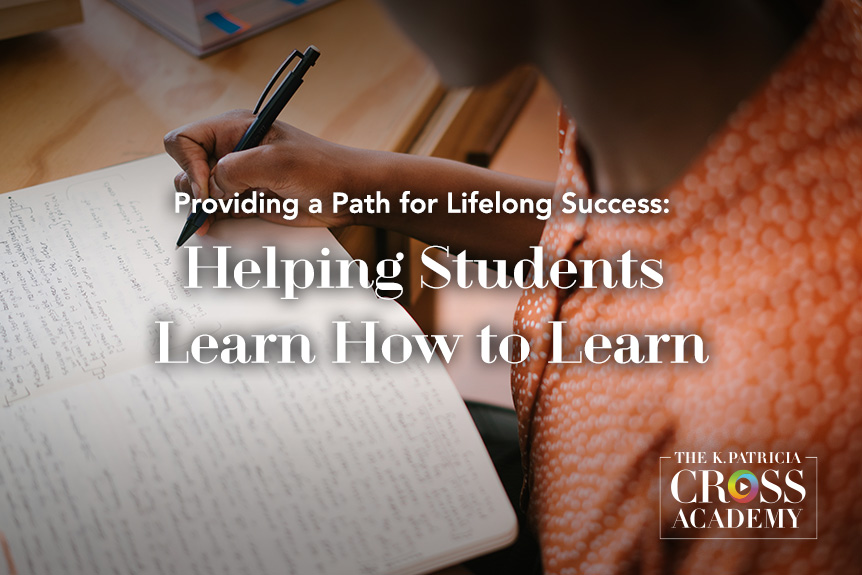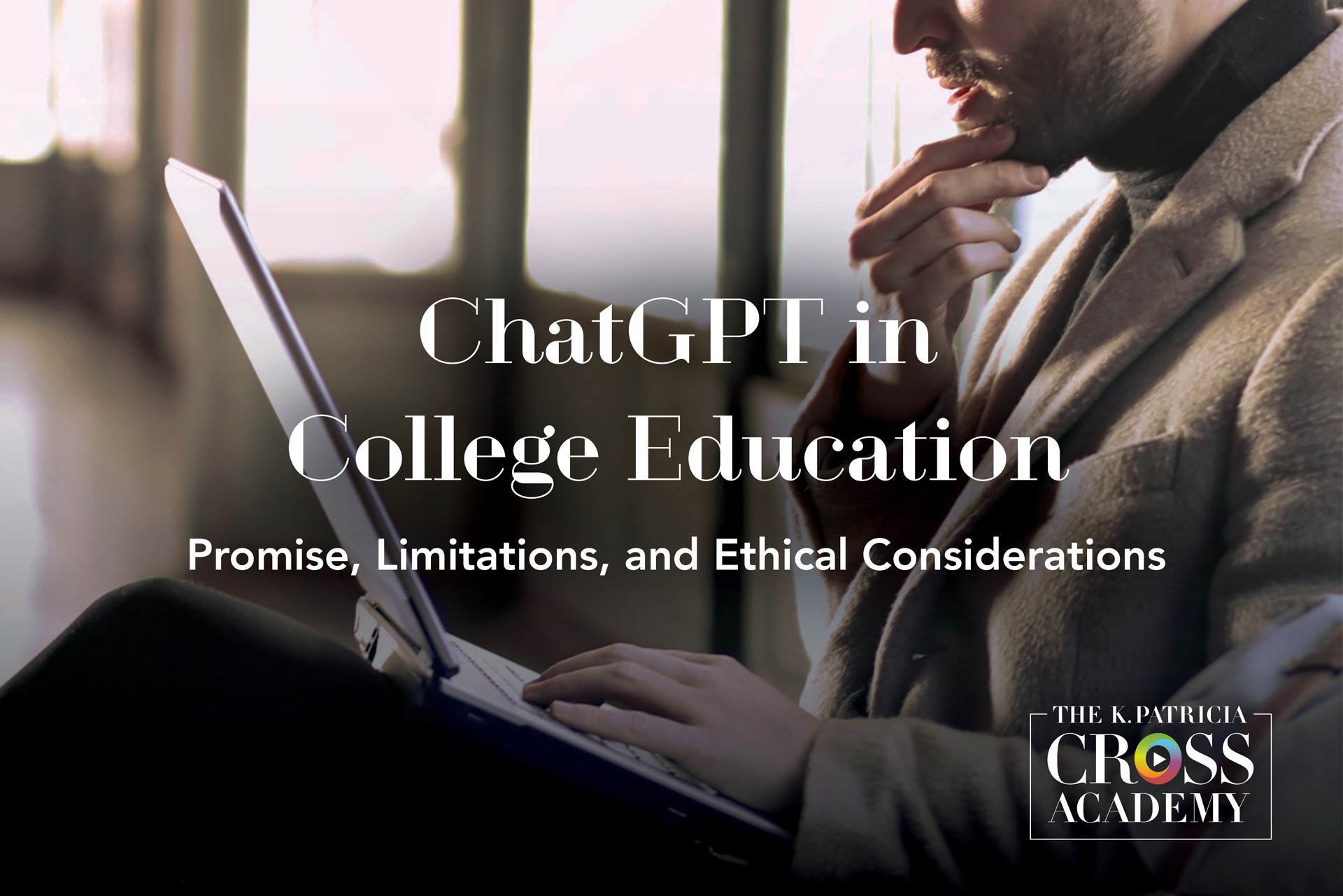
“Is this going to be on the test?”
Many of us have heard this question posed as students wonder aloud whether a new point or idea should be included among their notes. But how should it be answered?
Simply jotting down stray data points that may nor may not be included on an upcoming exam may help with rote memorization and review but may not lead to long-term retention.
The importance of note-taking is generally recognized by higher-education faculty. It keeps students engaged and focused, helping them to translate and adapt new information in their own words. Good note-taking is a skill that we must nurture and develop in our students, however.
There is nearly a century’s worth of research regarding the relationship between student learning and student note-taking during lectures. It indicates that students who understand how to take good notes benefit from doing so, and those who do not take notes are disadvantaged. A few of the key takeaways from the existing research are outlined below.
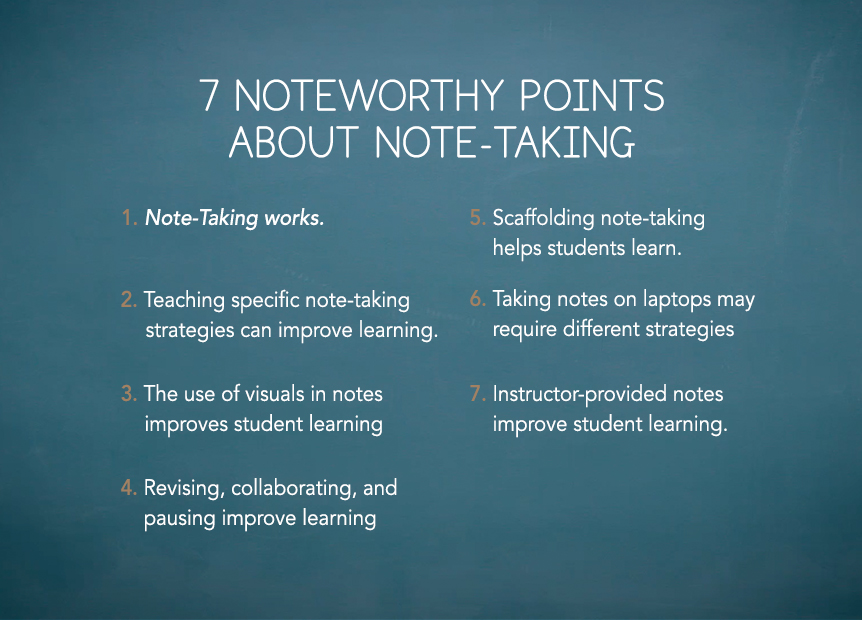
Note-Taking Works
The benefits of note-taking were realized nearly 100 years ago. Crawford studied in 1925 whether note-taking improved college students’ performance on quizzes. He determined that students who took notes performed better, that reviewing notes before a quiz was essential for success, and that effective organization of notes improved students’ test scores.
In the years since, other studies have corroborated Crawford’s conclusions in a number of ways. For instance, studies indicate that note-taking improves student learning during lectures and while reading (Kiewra, 2002; Chang & Ku, 2014).
Students learn more when they take notes than when they do not. The effort required to make notes encodes the information into terms or images that create new pathways to store the information in the brain’s long-term memory. Additionally, having a physical or digital copy of the information provides students an opportunity to revisit and review the content later.
Teaching Students Specific Note-Taking Strategies Can Improve Their Learning
Some students enter the classroom with a sense of what material should be included in notes, but for most students, taking time to teach them how to take notes – particularly using appropriate teaching techniques – can greatly enhance the quality of students’ notes and how much students learn and retain from their efforts (Boyle, 2013; Rahmani & Sadeghi, 2011). This is true for all students, but particularly those with learning disabilities.
The Use of Visuals in Notes Improves Student Learning
Wammes, Meade, & Fernandes (2016) examined the use of drawing and illustrations in note-taking and found that, compared to writing alone, the act of drawing and diagramming key information and ideas can influence student learning and retention.
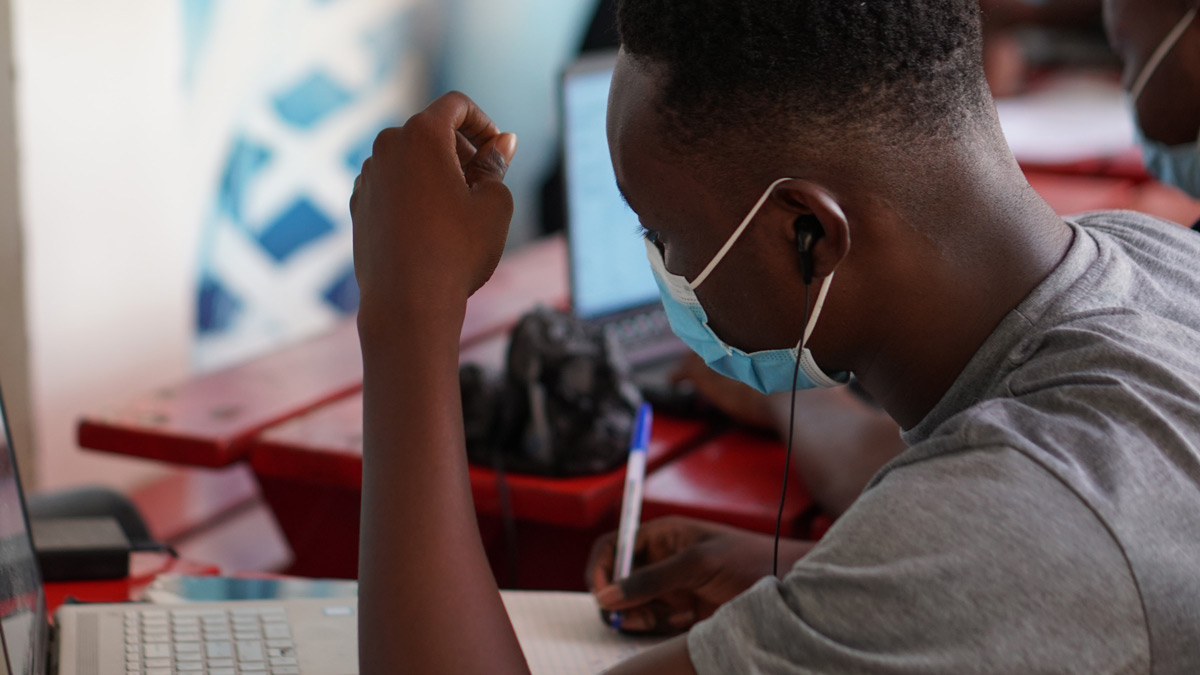
Revising, Collaborating with Peers, And Pausing During Note-Taking Positively Affects Learning
Students who are offered the chance to revise, rewrite, or add to their notes retain more material. If educators integrate specific pauses into their lectures or class activities for students to make revisions and updates to their notes, the students better retain the material and have better notes to revisit at a later time. And if students collaborate on revising their notes with classmates, they develop a more complete set of notes and perform better on tests (Luo, Kiewra, & Samuelson, 2016).
Scaffolding Note-Taking Helps Students Learn
Haydon, Mancil, Kroeger, McLeskey, & Lin (2011) determined that teachers can help their students take better notes by building note-taking scaffolds into their lesson plans. For instance, providing students with a partially completed guided note document or writing visual cues on the board can help students determine what should be retained in notes.
Taking Notes on Laptops May Require Different Strategies from Handwritten Notes
While some research indicates that handwritten notes better serve students than notes taken on a laptop (Mueller & Oppenheimer, 2014; Carter, Greenberg, & Walker, 2017), other studies have suggested there’s no substantive difference between students taking notes on paper or their computers (Artz, Johnson, Robson, & Taengnoi, 2017). However, one study suggests that digital note-taking may require different strategies. Wu & Xie (2018) found that, when completing online research, students who took notes using a matrix and who had enforced time limits were less distracted by irrelevant online content than their peers.
Instructor-Provided Notes Improve Learning
Kiewra (1985) found that when teachers provide students with complete, well-written notes to supplement their own notes, they learn much more than they do based on their notes alone.
In sum, the research suggests that we can do much more to help our students take effective notes than simply answering their “Is this going to be on the test?” question. Effective teachers can help students stay engaged and attentive, while taking notes and can ease the cognitive load on their working memory so that students better understand the material.
Cross Academy Techniques
Consider the following Cross Academy Techniques to help your students improve their note-taking skills:
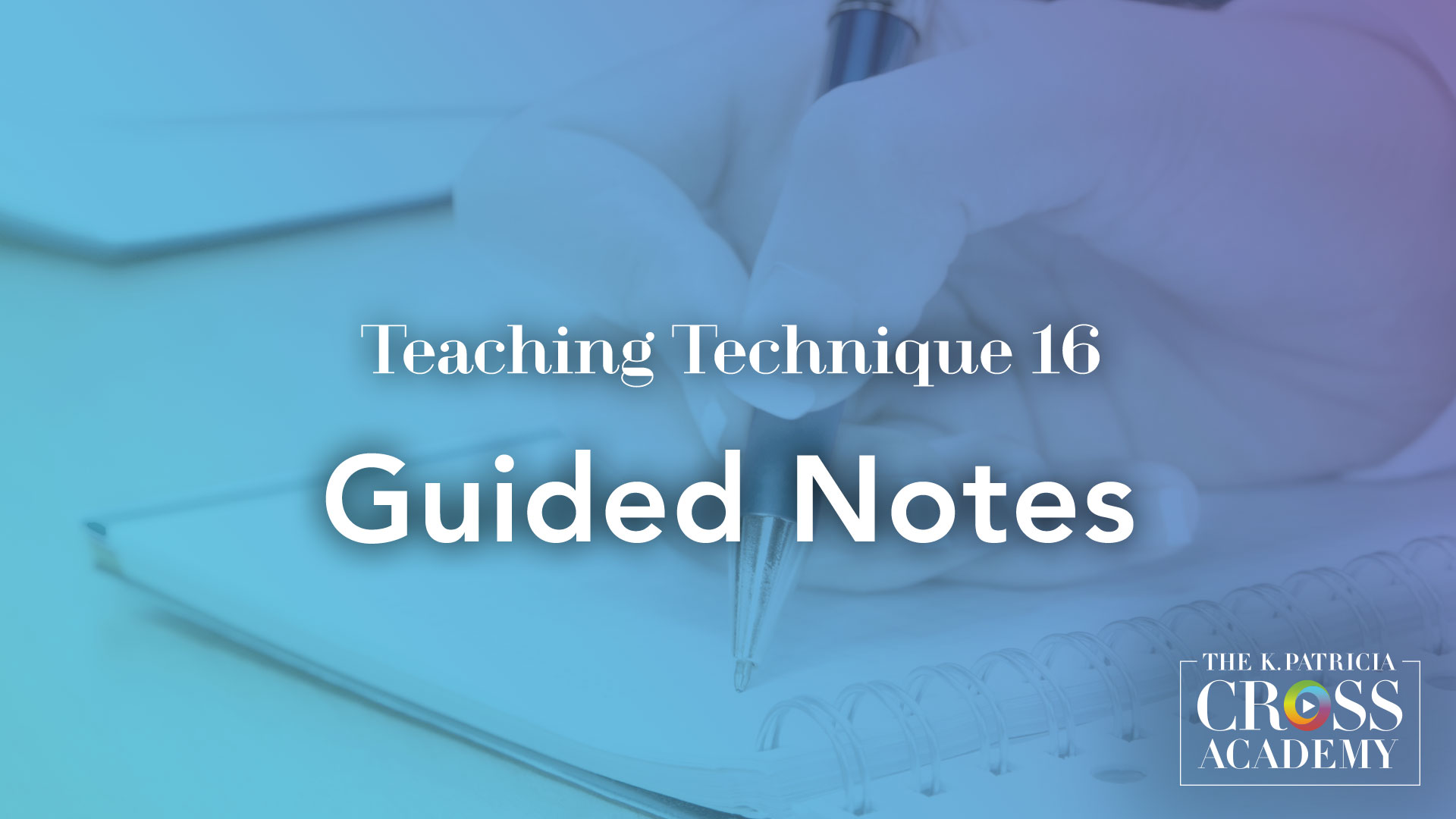
Guided Notes
Provide students with a partially completed set of notes that they will fill out during a class lecture, drawing their focus to key topics.
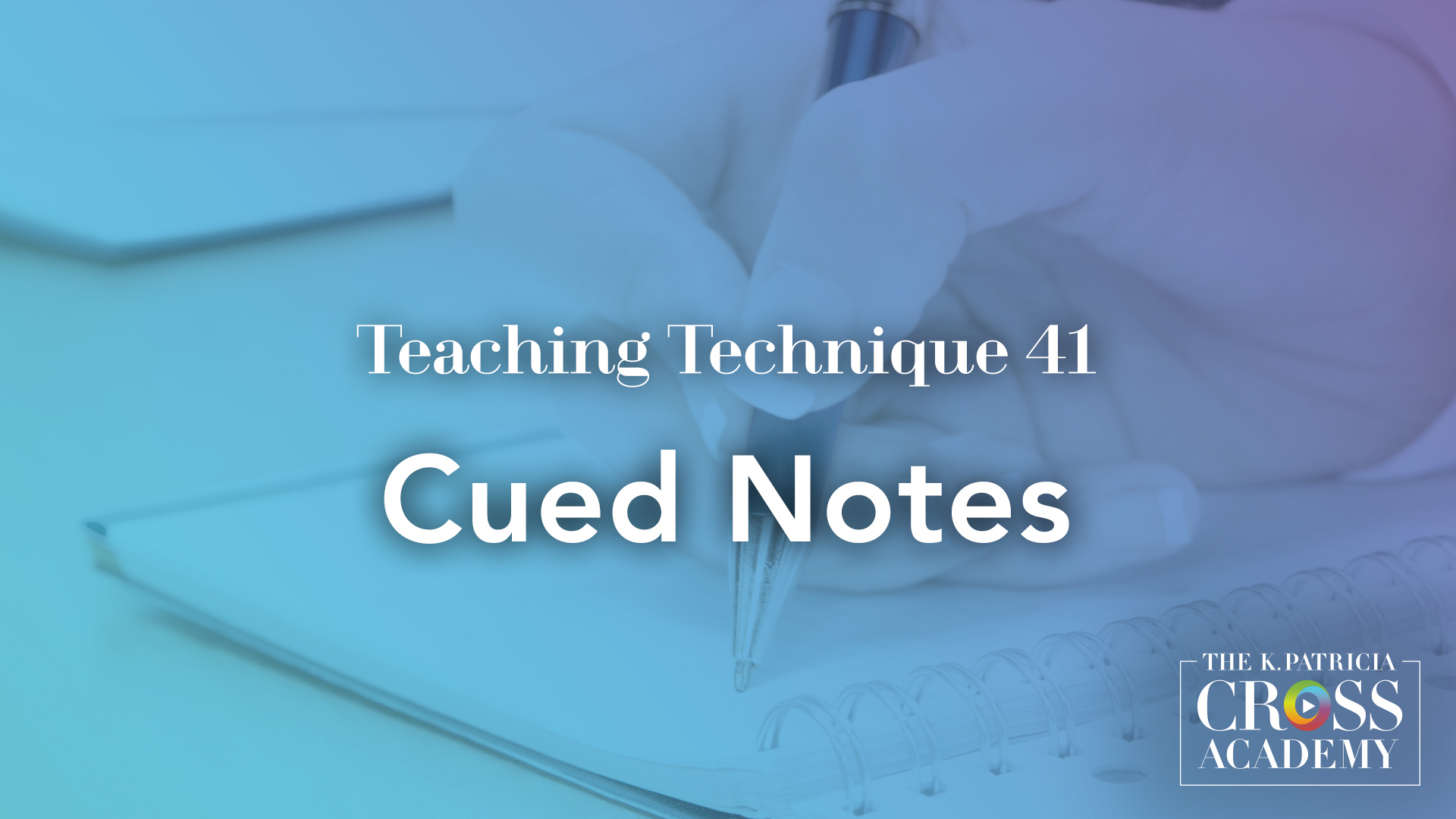
Cued Notes
Offer students a note-taking template to prompt them to listen for a cue that you provide and then take notes during the segment related to the cue. Then ask your students to summarize the full lecture.
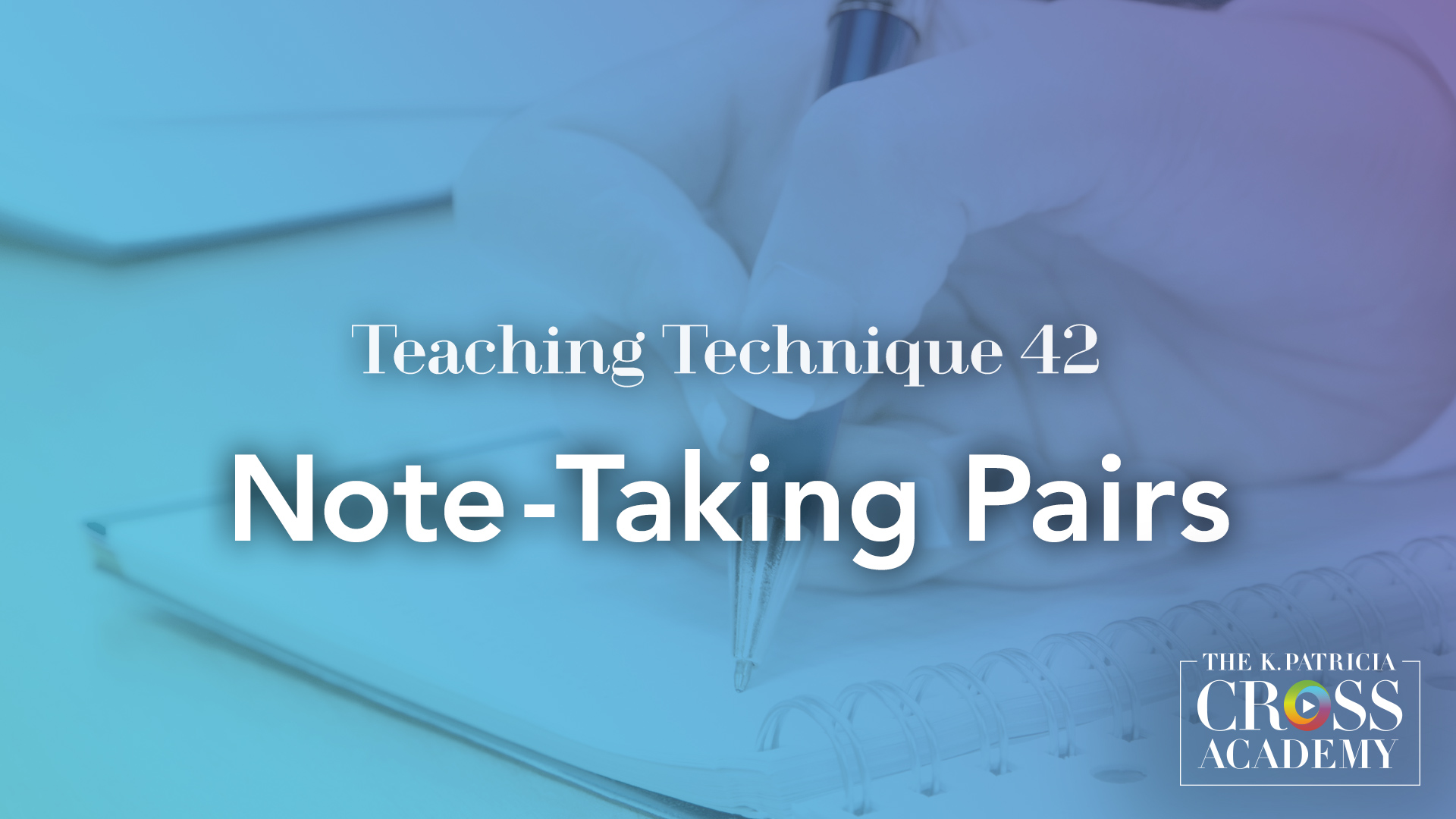
Note-Taking Pairs
Divide students into partners who will work together to improve their notes.

Sketch Notes
Ask students to supplement their handwritten notes with illustrative elements such as lines, arrows, drawings, stars, and boxes to show how concepts relate to each other.
References
Artz, B., Johnson, M., Robson, D., & Taengnoi, S. (2017). Note-taking in the digital age: Evidence from classroom random control trials. The Journal of Economic Education, 51(20), 103-115.
Boyle, J. R. (2013). Strategic note-taking for inclusive middle school science classrooms. Remedial and Special Education, 34(2), 78-90.
Carter, S. P., Greenberg, K., & Walker, M. S. (2017). The impact of computer usage on academic performance: Evidence from a randomized trial at the United States Military Academy. Economics of Education Review, 56, 118-132.
Chang, W., & Ku, Y. (2014). The effects of note-taking skills instruction on elementary students’ reading. The Journal of Educational Research, 108(4), 278–291.
Crawford, C. C. (1925). The correlation between college lecture notes and quiz papers. Journal of Educational Research, 12, 282-291.
Haydon, T., Mancil, G.R., Kroeger, S.D., McLeskey, J., & Lin, W.J. (2011). A review of the effectiveness of guided notes for students who struggle learning academic content. Preventing School Failure: Alternative Education for Children and Youth, 55(4), 226-231.
Kiewra, K.A. (1985). Providing the instructor’s notes: an effective addition to student note-taking. Educational Psychologist, 20(1), 33-39.
Kiewra, K.A. (2002). How classroom teachers can help students learn and teach them how to learn. Theory into Practice, 41(2), 71-80.
Luo, L., Kiewra, K.A. & Samuelson, L. (2016). Revising lecture notes: how revision, pauses, and partners affect note taking and achievement. Instructional Science, 44(1). 45-67.
Mueller, P.A., & Oppenheimer, D.M. (2014). The pen is mightier than the keyboard: Advantages of longhand over laptop note taking. Psychological Science, 25(6), 1159-1168.
Wammes, J.D., Meade, M.E., & Fernandes, M.A. (2016). The drawing effect: Evidence for reliable and robust memory benefits in free recall. The Quarterly Journal of Experimental Psychology, 69(9).
Wu, J. Y., & Xie, C. (2018). Using time pressure and note-taking to prevent digital distraction behavior and enhance online search performance: Perspectives from the load theory of attention and cognitive control. Computers in Human Behavior, 88, 244-254.
Suggested Citation
Barkley, E. F., & Major, C. H. (n.d.). Tips to encourage better note-taking in your class. CrossCurrents. https://kpcrossacademy.org/tips-to-encourage-better-note-taking-in-your-class/

Engaged Teaching
A Handbook for College Faculty
Available now, Engaged Teaching: A Handbook for College Faculty provides college faculty with a dynamic model of what it means to be an engaged teacher and offers practical strategies and techniques for putting the model into practice.



